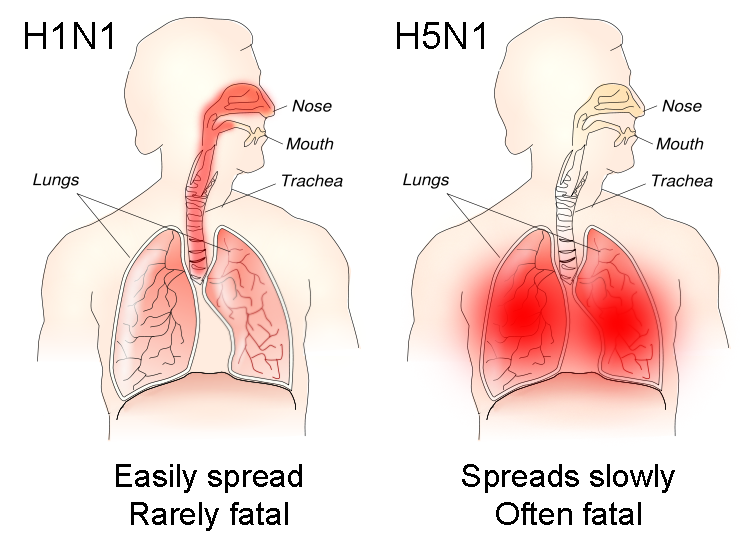|
H5N1 Virus
Influenza A virus subtype H5N1 (A/H5N1) is a subtype of the influenza A virus which can cause illness in humans and many other animal species. A bird-adapted strain of H5N1, called HPAI A(H5N1) for highly pathogenic avian influenza virus of type A of subtype H5N1, is the highly pathogenic causative agent of transmission and infection of H5N1, H5N1 flu, commonly known as avian influenza ("bird flu"). It is enzootic (maintained in the population) in many bird populations, especially in Southeast Asia. One strain of HPAI A(H5N1) is global spread of H5N1, spreading globally after first appearing in Asia. It is epizootic (an epidemic in nonhumans) and panzootic (affecting animals of many species, especially over a wide area), killing tens of millions of birds and spurring the culling of hundreds of millions of others to stem its spread. Many references to "bird flu" and H5N1 in the popular media refer to this strain. This was reprinted in 2005: According to the World Health Organiza ... [...More Info...] [...Related Items...] OR: [Wikipedia] [Google] [Baidu] |
Goose Guangdong Virus
The Goose Guangdong virus refers to the strain A/Goose/Guangdong/1/96 (Gs/Gd)-like H5N1 HPAI viruses. It is a strain of the Influenzavirus A subtype H5N1 virus that was first detected in a goose in Guangdong in 1996. It is an HPAI (High Pathogenic Avian Influenza) virus, meaning that it can kill a very high percentage of chickens in a flock in mere days. It is believed to be the immediate precursor of the current dominant strain of HPAI A(H5N1) that evolved from 1999 to 2002 creating the Z genotype (also called "Asian lineage HPAI A(H5N1)") that is spreading globally and is epizootic (an epidemic in nonhumans) and panzootic (affecting animals of many species, especially over a wide area), killing tens of millions of birds and spurring the culling of hundreds of millions of others to stem its spread.98%) nucleotide homology to the human influenza virus A/Hong Kong/156/97 (H5N1) in the six internal genes. The N1 neuraminidase sequence showed 97% nucleotide homology to that of the ... [...More Info...] [...Related Items...] OR: [Wikipedia] [Google] [Baidu] |
